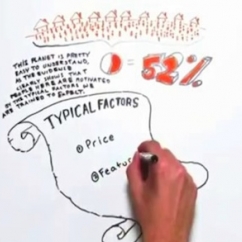Articles and News
Will Your Future Depend On The Traditional Customer Or A New Kind Of Customer? September 02, 2015 (0 comments)

Toronto, ON—While there’s no doubt the Great Recession has driven permanent changes in consumer behavior, experts disagree on what those changes mean to luxury retailers. Are consumers really more price-conscious than ever, whipping out their smartphones and forcing the local retailer to meet the best deal online, even for luxury goods? Or are affluent consumers searching for something unique, special, and personally relevant—for which they will happily pay full price without batting an eyelash?
The answer is both. At the 2014 annual convention for Mega Group, a Canadian consortium of independent furniture and home-goods retailers, CEO Benoit Simard played a compelling video for attendees. “A Tourguide To The Two Planets” is a 10-minute tale of two different kinds of consumers that have emerged from the Great Recession. These two groups, Traditional and NEO (New Economic Order), are driven by two distinct sets of values that determine their key motivation for buying. But most importantly, they are not confined by age, income level, or any of the standard measurements demographers use to predict luxury buying behavior.
Traditionals are drawn by price, features, and status. An earlier video called “Consumer Revivalist” shows how Korean carmaker Hyundai rocketed sales in the depths of the recession by offering an outstanding product at a very appealing price, with an iron-clad guarantee that the car could be returned if the customer didn’t like it. While it would be easy to dismiss the “traditional” customer as a modest-income budget shopper, affluent high-end consumers also can be traditional, if their primary motivation for purchasing luxury goods is a desire to express status.
NEO consumers, on the other hand, demand products with personal relevance. These shoppers are driven by quality, design, experience, and authenticity. Even NEOs who can’t yet afford luxury products still display that mindset, which will carry over into future purchasing once their income rises.
Retailers typically associate NEO values with Millennial consumers—and indeed the greater percentage of Millennials do fall into this category—but there are 70-year-old NEOs and 20-year-old Traditionals, so it isn’t all about age. What’s more, even a NEO consumer will adopt Traditional spending behavior for products they view as commodities.
Both videos explain why these consumers can be found across all ages and income demographics, and how to appeal to them and capture their loyalty.
Watch “A Tourguide To Two Planets” here and watch “Consumer Revivalist” here.







